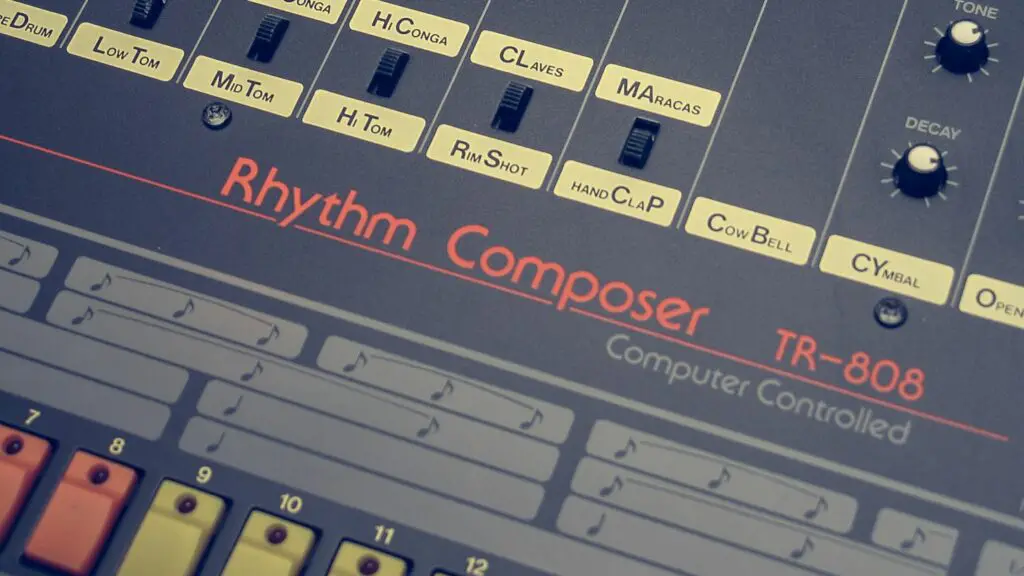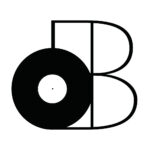When I was thinking of solutions to record drums with one microphone, I considered the possibility of recording each drum on its own in different takes. However, I felt the need to dedicate an entire article to the topic of recording drums one at a time. I’m not the first person who’s thought of it, so we’ll also be discussing what other professionals think about it!
If you’ve ever considered recording drums one at a time, just know that you’re not alone. However, it WASN’T because they only had one microphone to work with. Recording drums one at a time WILL sound different than recording the entire kit at once. Depending on what you’re going for, you may actually want to consider using this technique, but you may also want to avoid it altogether. We’ll be looking at the advantages/disadvantages of recording drums one at a time and answering some common questions along the way. Shall we get started?
- Is it possible to record drums one at a time?
- Should you be recording drums one at a time?
- The advantages of recording drums one at a time
- The disadvantages of recording drums one at a time
- Would I personally record drums one at a time?
Is it possible to record drums one at a time?
In short, yes. It is possible to record drums one at a time and it’s been done before. Actually, one of the most famous examples of this technique can be heard on Joy Division’s album “Unknown Pleasures”.
Martin Hannett probably got his inspiration from working with drum machines.
Secondly, Hannett was obsessed with drums. And while he had previously incorporated drum machines into his mixes, he saw no need on Unknown Pleasures. He was also excitedly impressed with Morris’ robotic precision (so much so that he reportedly insisted that Morris record some tracks playing only one drum at a time, in some absurdly obsessive scheme to eliminate all possible bleeding).
happymag.tv
Think about it, recording drums one at a time is very similar to programming drum machines. Technically speaking, the samples on your drum machine weren’t recorded in the same room or at the same time. However, the performance IS performed at the same time.
On the other hand, your DAW is kind of like a drum machine (or like a tape machine).
Each track is synchronized with one another much like each sample is synchronized using the drum machine’s step-sequencer. So, why couldn’t we record our drum parts one at time and synchronize them together?
It’s kind of like looping; you just keep adding one layer at a time.
Beginner drummers would also find it much easier to focus on each drum individually. The most difficult part about playing drums is keeping the time between 2-4 parts simultaneously.
In other words, maybe the computer would be capable of assisting…
And yes, you would only need ONE microphone to accomplish all of this.
However, I don’t want to mislead you. It may seem like an excellent idea at first, but there are a few things you should consider before settling on recording drums one at a time. It’s not as easy as it sounds and has its challenges (like any other method).
The rest of this article is dedicated to addressing these concerns.
Should you be recording drums one at a time?
It really depends on what you’re going for. As we discussed in the previous section, recording drums one at a time can be very similar to using a drum machine and/or drum samples.
The question is… Why wouldn’t you use those instead?

Well, it’s true that sample libraries have gotten REALLY good and sound like the real thing. However, I personally believe that the depth/complexity of an acoustic drum kit can never truly be replicated by any sample library.
At that point, you’d need to record your parts using an electronic drum kit for best results.
Even then, you’d need one of the best electronic drum kits to replicate the subtle nuances.
That being said, you can clearly see where I’m going with this… Musicians who value realism above all else are much more likely to consider recording drums one at a time. More specifically, we’re talking about musicians who want MIDI-like precision while using real drums.
However, quantizing audio isn’t as simple as quantizing MIDI.
You’ll still need impeccable time to pull this off!
After watching this video, it was clear to me that recording drums one at a time wasn’t as simple as it sounded in theory. Of course, it really depends on the complexity of your drum parts, but performing drum fills seemed to be one of the most difficult aspects to capture.
In other words, you should be fine if you’re using kick, snare and hi-hat.
However, once you start incorporating drum fills with toms, it’ll become more difficult.
On the other hand, one of the points the drummer in the video DIDN’T mention was that you could actually use this technique to work on your time/feel. You’ll need to focus on each part on its own which can be difficult when you’re used to playing it all at once.
It may take some adaptation, but there’s no reason why this method COULDN’T work.
So before you decide, let’s go over the advantages/disadvantages together!
The advantages of recording drums one at a time
One of the main reasons Martin Hannett (from Joy Division) wanted to record drums one at a time was to eliminate microphone bleed. If you’re not familiar with this phenomenon, it’s basically when your kick drum microphone picks up a bit of the snare drum, for example.
By recording drums one at a time, each drum will sound incredibly CLEAN.
Another point that was brought up in the article I read about Joy Division’s “Unknown Pleasures” album was the machine-like precision of recording drums like this. The drummer can “program” each drum part into the DAW as if he/she were programming it into a drum machine.
For the sake of recording, I think it’s an excellent idea if you’re going for that kind of sound, BUT
For the sake of composition, I really believe that recording drums one at a time can become an integral part of your workflow. It can lead you to possibilities you would’ve never explored having recorded the entire drum kit at once.
It’s identical to playing electric guitar through a looping pedal (like the Ditto Looper).
You can add one layer at a time, just like making a beat!
So, if I were to summarize the advantages of recording drums one at a time… It’s the same as making beats, but with REAL drums.
Beatmakers transitioning to acoustic drums would probably find this method to THEIR advantage. However, professional drummers would probably find it much simpler to just record the entire thing in one take.
Beginners, on the other hand, might not be capable of accomplishing that.
Here’s a summary of the advantages of recording drums one at a time:
- Eliminates microphone bleed
- Provides more precision for each part
- An interesting technique for your creative flow
- Beatmakers/beginners can start recording drums early
The disadvantages of recording drums one at a time
Now, we also need to consider challenges we’ll be facing by recording drums one at a time. After consulting some online forums, it seems that most people are advising against using this recording technique.
I agree with what they’re saying, but I still think they’re biased opinions.
What works for one may not work for another (and vice-versa). That being said, there are still some common flaws with recording drums one at a time that apply to EVERYBODY. One of the caveats that came up the most was the time consumption.
It would take you 2-4 times longer to record drums this way.
Another one issue that we discussed earlier was the difficulty when recording more complex patterns like drum fills. It’s not impossible and shouldn’t be too difficult for professional drummers to pull off.
That being said, beginners with underdeveloped time may struggle which defeats the entire purpose of using this technique for its ease of use.
As long as the drum part is simple though, it shouldn’t be an issue.
The last disadvantage I could think of actually contradicts one of the advantages we discussed. I’m talking about the absence of microphone bleed of course!
Recording an entire drum kit at once results in a bigger/fuller sounding mix.
Avoiding microphone bleed totally works in some instances, but it’s really an aesthetic choice. By recording drums one at a time, you’re still sacrificing some of the “realism” associated with recording an acoustic drum kit.
For example, it’d be impossible to have room/overhead microphones in the mix.
Here’s a summary of the disadvantages of recording drums one at a time:
- It takes longer
- Recording drum fills is difficult
- The absence of microphone bleed
Would I personally record drums one at a time?
After writing this article, I’m still thinking of recording drums one at a time. I wouldn’t use it on every project, but it actually seems like an interesting recording technique.
I see LOTS of value in the composition/production phase.
However, I don’t believe it’d be wise to rely on this technique as some sort of crutch. If you’ve just started playing drums, I still recommend developing your skills so that you’ll have the freedom to decide for yourself.
Recording drums one at a time can still be used to “cheat” if you’re having difficulty though.
If you’re going that route, I recommend doing it for the entire track (not just 4 bars). Otherwise, the performance will sound inconsistent and THAT would be problematic.
If you’ve only got one microphone to work with though… There are actually much better methods for recording drums with one microphone which I covered in this article.
I don’t believe that you should be recording drums one at a time because of constraints. Like we discussed, the artists that have decided to work this way were doing it in professional recording studios with access to dozens of microphones.
That being said, I’ll be leaving you with a shopping list of the microphones I recommend for each individual drum. I have in-depth product reviews for each microphone and talk about their application in my guides on recording drums with 1, 2 and 4 microphones.
AKG Perception P5 S (for snares, toms and beyond):
Sennheiser e 602-II (for kicks drums):
Samson C02 (for overheads and beyond):
If you thought you were the first to think of recording drums one at a time, think again! I honestly believe in the idea and think it has many advantages for music producers, especially in regards to creative flow. However, every recording technique has its challenges. It’s just a matter of deciding what it is that you REALLY want and committing to the process of achieving those results. If you’d like more guidance on your drum-related recording projects, consider subscribing to my weekly newsletter. Thanks for stopping by, I really appreciate your time and dedication!
Sources:
https://www.thegearpage.net/board/index.php?threads/multitracking-drums-one-at-a-time.998747/
https://happymag.tv/engineering-the-sound-joy-divisions-unknown-pleasures/









2 thoughts on “Recording Drums One At a Time”
Wow I never knew that drums could be recorded separately, it sounds terribly technical and complicated. I never considered before why or how this would be done but now that I’ve read your post it makes perfect sense. My husband is the big music fan in our home and I know he will find this fascinating.
Hey Lynne,
It’s actually much more technical to work this way. However, some people may find the challenge appealing for creativity’s sake! I’m sure your husband will find it interesting. It’s worth a shot!
Thanks for dropping by, take it easy.
– Stefan